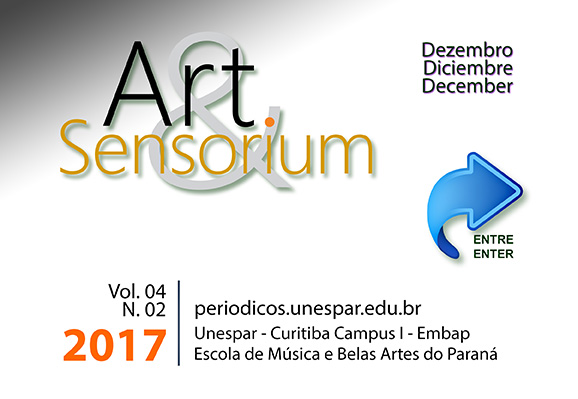QUADRINHOS VISIONÁRIOS DE SERGIO MACEDO
DOI:
https://doi.org/10.33871/23580437.2017.4.2.097-116Keywords:
processos criativos, visões, arte visionária, ENOCAbstract
Este artigo trata da vida e obra do autor brasileiro de quadrinhos Sergio Macedo. O intuito é resgatar a obra do artista, uma vez que a maioria dela é inédita no Brasil. São edições originalmente publicadas na França, bem como na Alemanha, Inglaterra, Itália, EUA, dentre outros países. Além do registro histórico, o intuito maior da pesquisa é analisar o trabalho de Macedo em busca de identificá-lo como um artista visionário. O termo Arte Visionária, com o qual trabalho, deriva do Manifesto da Arte Visionária, escrito por Laurence Caruana (2013). Basicamente, se refere às poéticas derivadas das visões de Estados Não Ordinários de Consciência – ENOC. No tratado, o artista relaciona diversos tipos de visões e sentimentos que podem ocorrer com quem se aventura pelos ENOC. Desta matéria-prima o artista busca materializá-la utilizando da linguagem que lhe cabe. No caso de Macedo são os quadrinhos. As histórias produzidas pelo autor estão repletas de visões de ENOC obtidas por diversas formas. Em alguns casos a trama das HQs são determinadas por visões. O método utilizado para a investigação foi por meio de análise dos trabalhos a partir dos processos criativos, com informações coletadas em entrevistas diretas com Macedo ou publicadas em outros meios.Downloads
Download data is not yet available.
Downloads
Published
2017-12-19
Issue
Section
Artigos
License
Copyright (c) 2022 International Interdisciplinary Journal of Visual Arts - Art&Sensorium

This work is licensed under a Creative Commons Attribution 3.0 Unported License.
Authors who publish with this journal agree to the following terms:- Authors retain copyright and grant the journal right of first publication with the work simultaneously licensed under a Creative Commons Attribution License that allows others to share the work with an acknowledgement of the work's authorship and initial publication in this journal.
- Authors are able to enter into separate, additional contractual arrangements for the non-exclusive distribution of the journal's published version of the work (e.g., post it to an institutional repository or publish it in a book), with an acknowledgement of its initial publication in this journal.
- Authors are permitted and encouraged to post their work online (e.g., in institutional repositories or on their website) prior to and during the submission process, as it can lead to productive exchanges, as well as earlier and greater citation of published work (See The Effect of Open Access).


